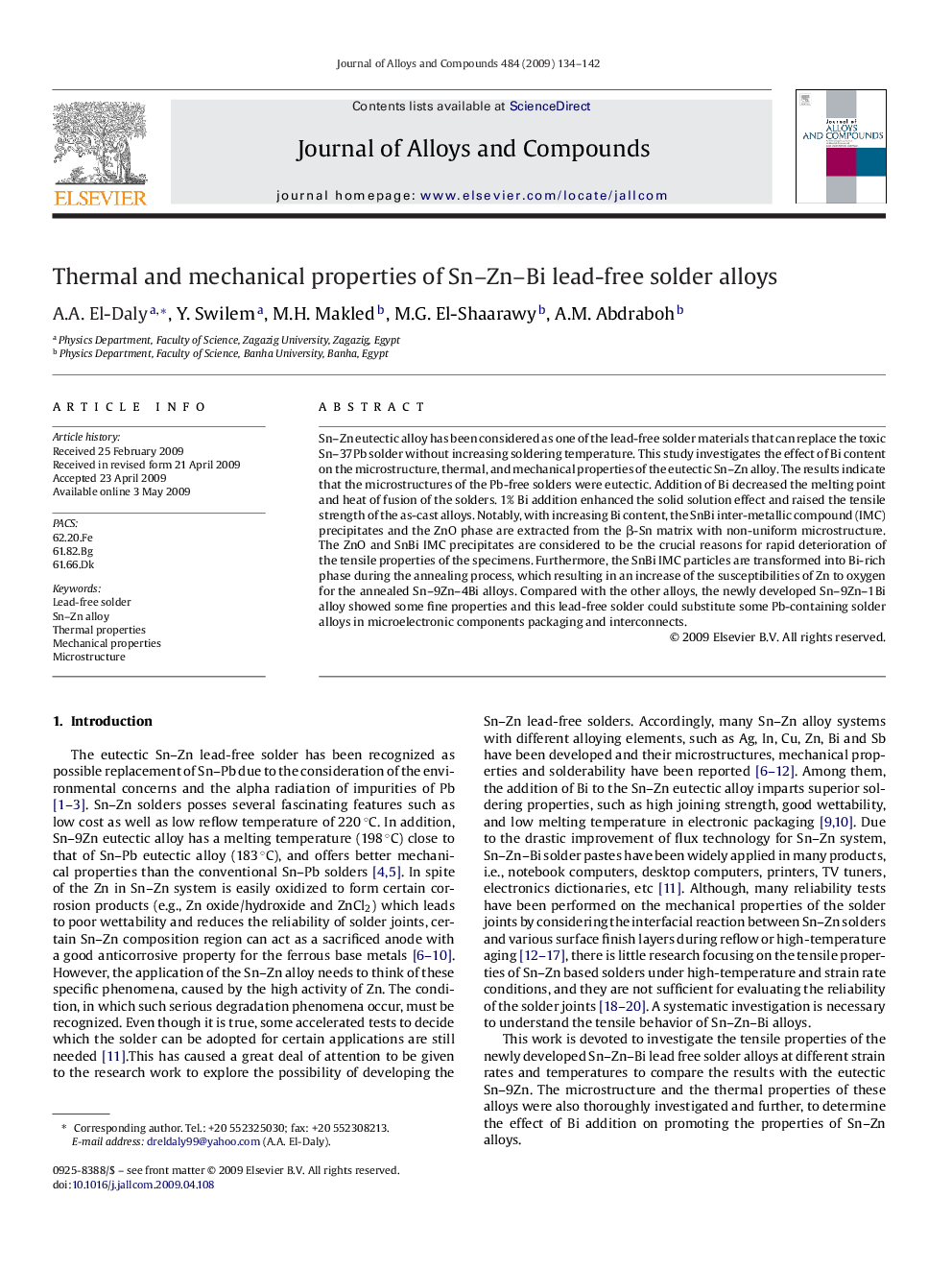| Article ID | Journal | Published Year | Pages | File Type |
|---|---|---|---|---|
| 1621282 | Journal of Alloys and Compounds | 2009 | 9 Pages |
Sn–Zn eutectic alloy has been considered as one of the lead-free solder materials that can replace the toxic Sn–37Pb solder without increasing soldering temperature. This study investigates the effect of Bi content on the microstructure, thermal, and mechanical properties of the eutectic Sn–Zn alloy. The results indicate that the microstructures of the Pb-free solders were eutectic. Addition of Bi decreased the melting point and heat of fusion of the solders. 1% Bi addition enhanced the solid solution effect and raised the tensile strength of the as-cast alloys. Notably, with increasing Bi content, the SnBi inter-metallic compound (IMC) precipitates and the ZnO phase are extracted from the β-Sn matrix with non-uniform microstructure. The ZnO and SnBi IMC precipitates are considered to be the crucial reasons for rapid deterioration of the tensile properties of the specimens. Furthermore, the SnBi IMC particles are transformed into Bi-rich phase during the annealing process, which resulting in an increase of the susceptibilities of Zn to oxygen for the annealed Sn–9Zn–4Bi alloys. Compared with the other alloys, the newly developed Sn–9Zn–1Bi alloy showed some fine properties and this lead-free solder could substitute some Pb-containing solder alloys in microelectronic components packaging and interconnects.
